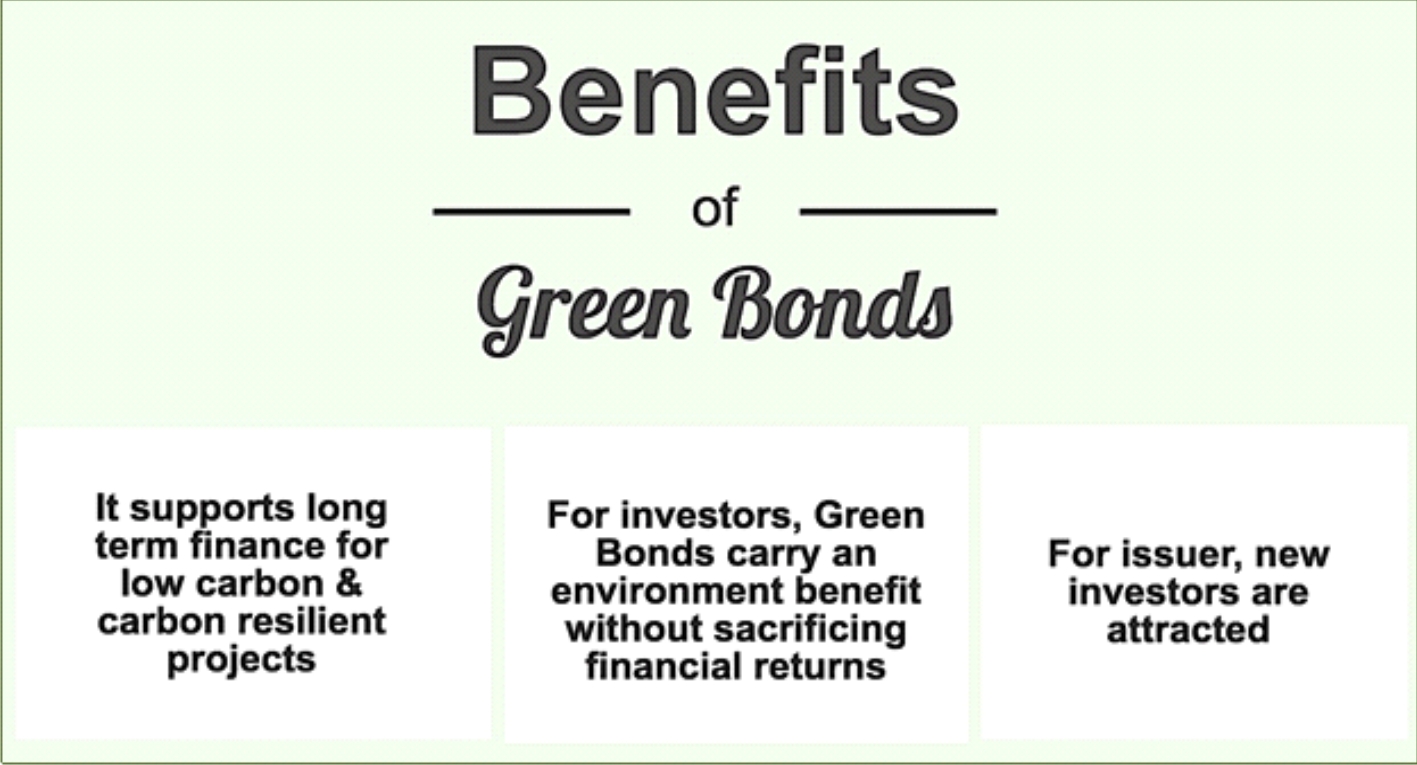|
Green Bonds: Greening the Future
India is at an acute stage in scaling renewable energy to provide access to its growing cities and vast rural communities. India has set an ambitious target of installing 175 GW of solar, wind and other renewable energy by 2022. Financial instruments like green bonds are a tool to meet the rapid expansion of India’s clean energy market that can help in meeting the aspiring target.
Green bonds are like
any other bonds. It is a fixed-income financial investment for raising
capital through the debt market like traditional corporate bonds. The
only difference is that the green bonds raise funds for projects with
environment benefits like renewable energy, low carbon transport or
climate adaptation. In simpler words green bonds is a tool to advance
low carbon future. Green bonds have transpired as one of the key financing mechanisms, which will help in transition of the global economy to a greener future. India’s green bond market has gone through many breakthroughs but there is still lot of scope and potential which is untapped. In 2014 Indian Renewable Energy Development Agency ltd. (IREDA) launched India’s first green bond to support renewable energy projects. In 2016, tax free Rs.10 billion green bonds were launched which were oversubscribed by over five times on the opening day. These tax-free bonds offered the retail investors up to 7.68% interest rate for tenures ranging between 10 and 20 years. These tax saving benefits have an interest rate for investors which is substantially higher than bank rate which attract charge higher income tax on interest income. The IREDA green bonds successfully reached a broad base of investors including retail individual investors, high net-worth individuals and institutional buyers. In January 2015 Yes bank, one of India’s largest private bank took its first step towards sustainability by issuing its first green bond. This Euro denominated Rs.10 billion green bond received an AA+ rating and was oversubscribed by almost over two times which exhibited its demand. The issue proceeds are being utilised for clean, renewable energy projects such as solar projects, wind energy, hydropower projects. After this success, Yes bank again in August 2015 issued a 10 year long Rs.3.15 billion green bond which was subscribed by International Financial Corporation (part of the World Bank Group). International Financial Corporation then issued ‘Green Masala Bond’ on the London stock exchange for the same amount. This basically capitalised the Yes bank green bonds and lowered the cost of lending to green projects. These proceeds will support an impending infrastructure bond issuance by Axis Bank. The main objective of these bonds is to mobilise international capital markets to increase foreign direct investment to support infrastructure development in India. After the Yes Bank initiative, IDBI BANK, which is a state-owned bank, raised Rs.22557.50 million for renewable energy projects in November 2015 becoming India’s first public sector bank to issue green bonds. Several entities in India have issued green bonds and raised more than Rs.120 billion so far. It appears that till date Indian issuers have established and demonstrated best practices in issuing green bonds in the market. Currently more than 60% of the total labeled green bond proceeds are allocated to renewable energy projects helping the country to reach its renewable energy target. After analysing the green bond market in India, it can be seen that there is $15.7 billion unlabeled climate bonds that can be labeled in future. ■ References: 1. National Resource Defense Council, Greening India’s financial market. How green bond can drive clean energy deployment (April 2016). 2. Climate Bond Initiative. Bonds & Climate change: The state of the market India (2016). 3. Sanjay Vijayakumar, Understanding green bonds and greener way of financing. The Hindu. (April 2015)
Ani Singh |
